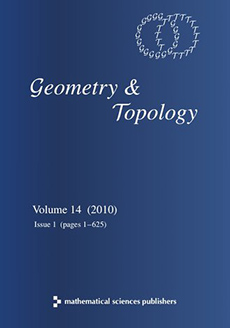Abstract
Given a commutative ring spectrum , let be the Loday functor constructed by Brun, Carlson and Dundas. Given a prime , we calculate and for , and use these results to deduce that in the connective Morava K-theory of is nonzero and detected in the homotopy fixed-point spectral sequence by an explicit element, whose class we name the Rognes class.
To facilitate these calculations, we introduce multifold Hopf algebras. Each axis circle in gives rise to a Hopf algebra structure on , and the way these Hopf algebra structures interact is encoded with a multifold Hopf algebra structure. This structure puts several restrictions on the possible algebra structures on and is a vital tool in the calculations above.
Citation
Torleif Veen. "Detecting periodic elements in higher topological Hochschild homology." Geom. Topol. 22 (2) 693 - 756, 2018. https://doi.org/10.2140/gt.2018.22.693
Information





